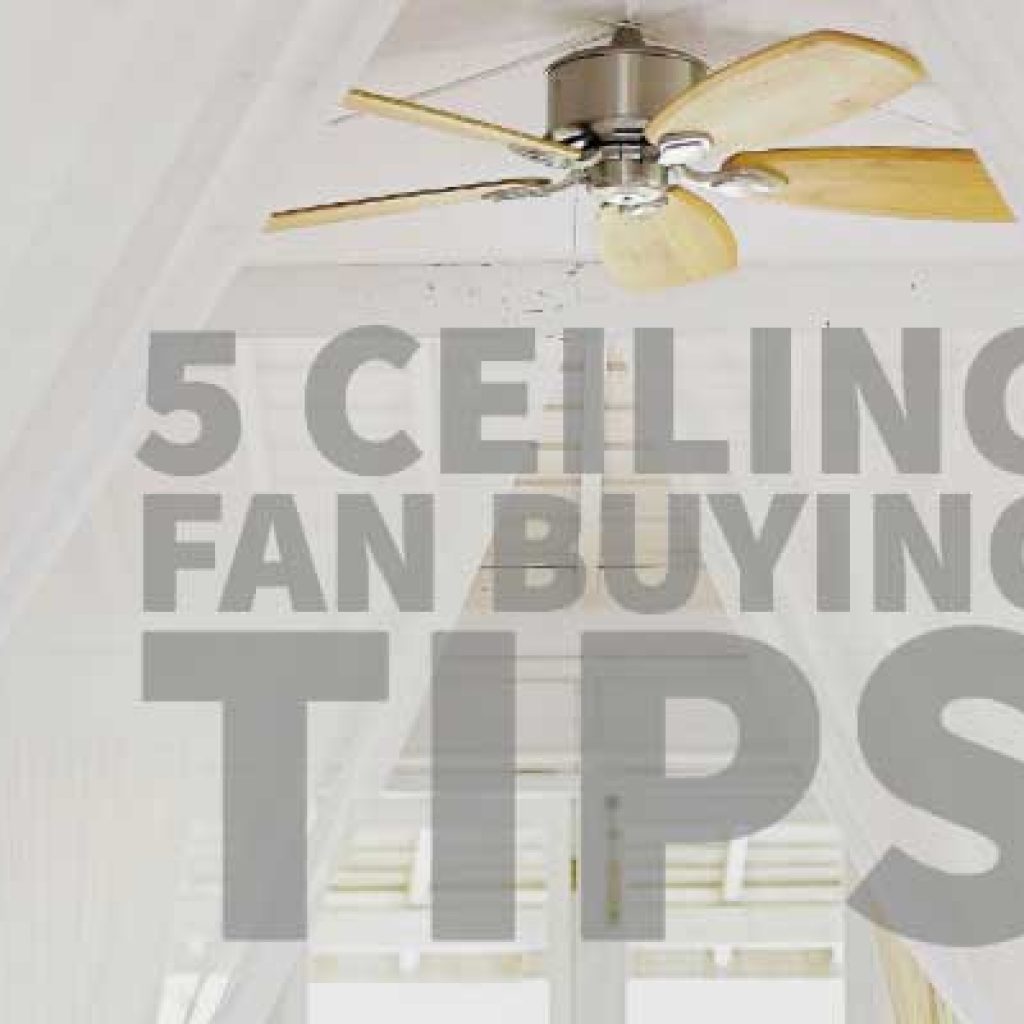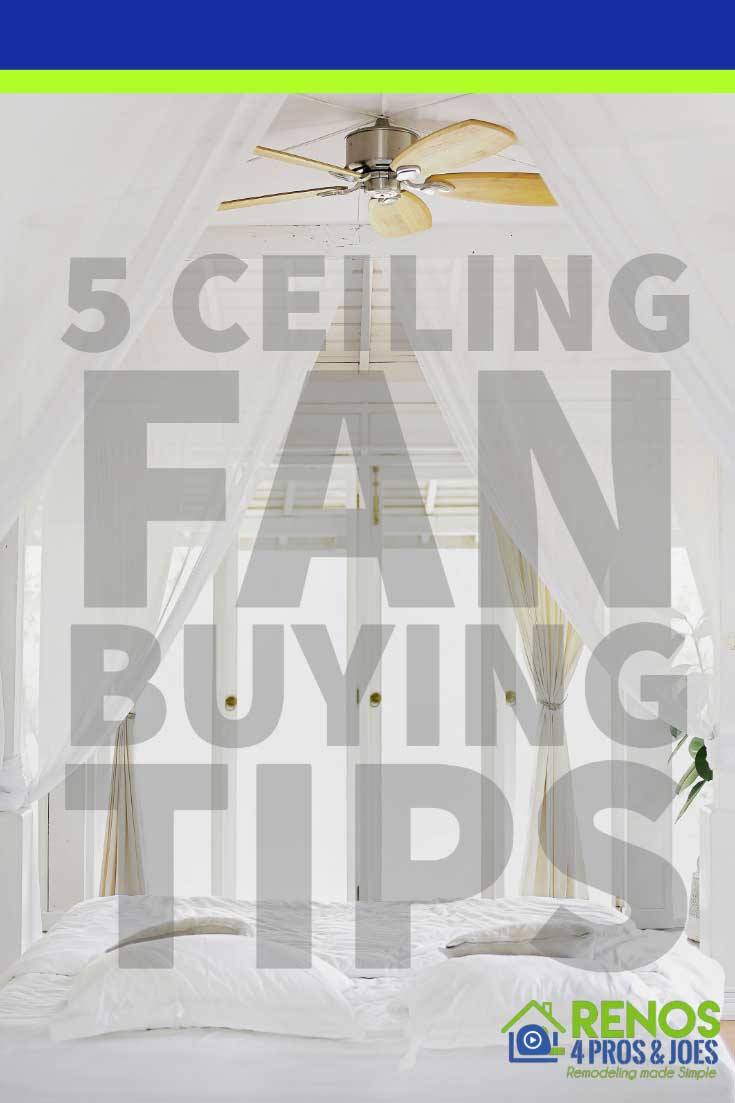5 Tips For Buying a New Ceiling Fan
When making upgrades to your home, there are many changes and improvements that you can make that can make a large difference in the overall feel of your home without you having to break the bank.
Type of Ceiling Fans
One change that comes to mind is adding a ceiling fan. Ceiling fans come in two main varieties, those with lights and those without. However, there are also quite a few models that don’t come with lights, but are compatible with light kits. It could be an option if you just have your heart set on particular fan design and simply cannot find one that comes with the light that will fit the bill.
Ceiling fans with lights solve two problems: (1) they circulate air within a given space and (2) they also provide an additional light source. Ceiling fans come in an endless number of styles and designs.
When considering a ceiling fan, most buyers consider the color/style of the fan blades, the color/style of the motor housing, and the style of the glass. However, there are at least 3 more major factors that should be considered and evaluated during the selection process.
Fan overall size
The main factor in determining the fans overall size is the length of the blades. Larger spaces will experience better air circulation with larger fans. Most fans will indicate their size as well as the ideal size of the room they’re are designed to work in.
Fan fixture depth/height
An often overlooked factor is the depth of the fan. In other words, the distance from the top of the fan to the bottom of the light fixture (of bottom of the motor housing if the fan does not have a light).
The average ceiling height in most homes is around 8 feet tall. However, some are taller and some are shorter. When determining whether a fan will work in your space you should consider how low from the ceiling the fixture will hang. There are fans that are specifically designed to fit tight to the ceiling. There are also fans that are designed with an extension pole that allows the fan to hang down from the ceiling.
Homeowners shopping for fans for rooms that have ceilings that are taller than 8 feet also have to give consideration to height. It is possible to have a fixture that is too tall to comfortably reach the pull chains that control the fixture. In these cases you may require a longer extension pole that is usually sold separate.
In less extreme cases, you may be able to purchase a pull chain extension that will allow you to still access the fan and light controls from its higher location. Another option for controlling tall fans is wall switches and remote controls. These two options eliminate your need to touch the fan itself all together. Making the necessary adjustments for height is usually not a huge problem, but it can be a big inconvenience if you recognize the issue on the front end and plan for the additional steps in advance.
Fan light brightness
The overall brightness of the fan light fixture is an element that really should be at the top of the list of considerations, but somehow it is often overlooked. I’m guilty of having fallen victim to this oversight myself. It extremely easy to do in the era of online shopping.
A few months back I ordered some really fancy modern style ceiling fans with lights for a basement remodeling project. The fans were more pricey than most of fixtures they had in the store, and they were only available online. As a result, I did not have the opportunity to see the fixtures in person before I ordered.
When the fans arrived and we began assembling them, we quickly realized that these fans assembly was slightly different that most fans and they also required a few extra steps in order to put them together. These fans had way more pieces and parts to assemble too.
Upon completing the assembly and install we realized that the fans were designed to work only by remote control. And of course, these fans did not include batteries for the remotes! But they did look really cool once we got them installed.
The following day we hunted down the uncommonly sized batteries and took them to the project for install. And that’s when we got a really rude awakening! The lights were sooo dim that they basically served no purpose other than mood lighting. When I say dim, I mean it was so dim that it was hard to see the floor!
So yes, we went through all that just so we could uninstall, disassemble, repack, and then return them.
Lesson Learned!
Always look for the information on the brightness of the light. Brightness is measured in lumens. The higher the number, the brighter the light. In this particular instance the light information online did not indicate the brightness of the light. However, there was a huge clue that we overlooked-the size and number of bulbs.
Each fan had one bulb (non-LED) and they were tiny. The bulb was the size of two sections of your pinky finger. If I had caught this when we opened the first box before we started assembly, MAYBE I would have made the assumption that it would not have been bright enough, Maybe…
Always get as much info on the light specifications as possible prior to purchase, particularly if you are buying online. Also, as a general rule, a light with a closed housing is going to give off less light than a light that is similar in brightness that is in an open housing. When I say open housing I mean that you can actually see the light bulb and in most cases you can touch it as well. Lights with open housings usually have open globes that either point up or down. Those that point down are usually going to be brighter than those that point up.
These are rules of thumb. Lighting technology is improving at a very fast pace, so when in doubt check the lumens!


